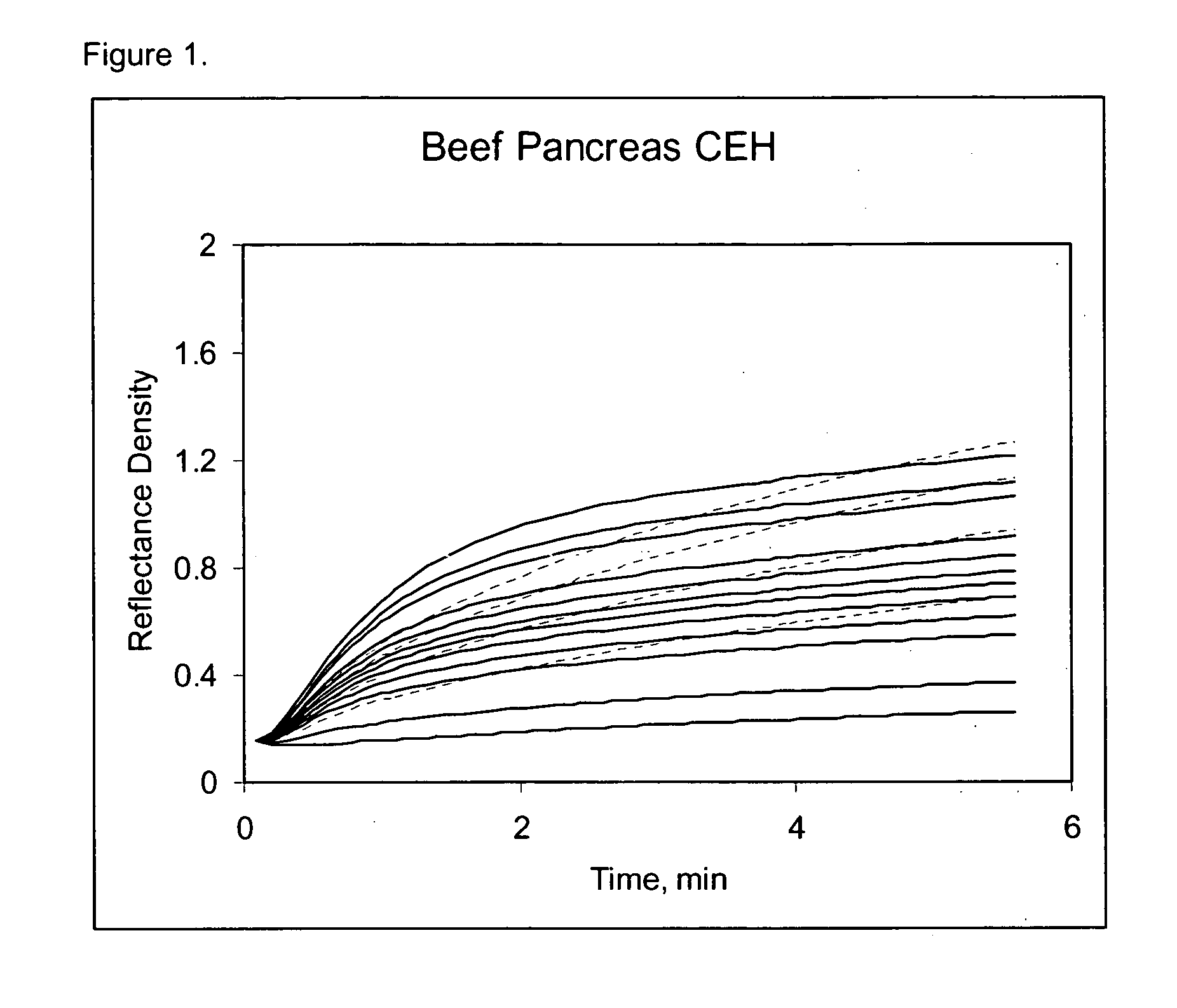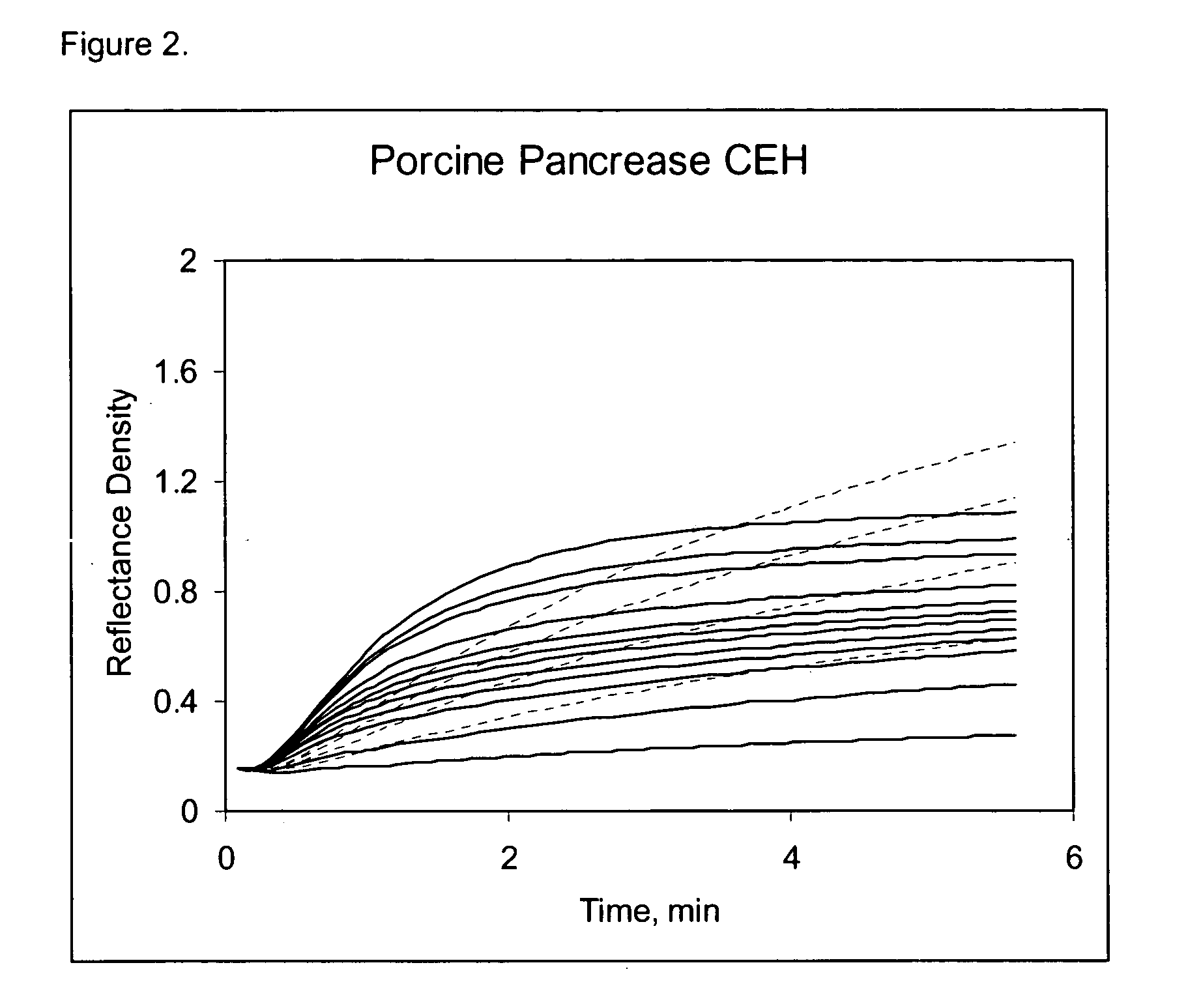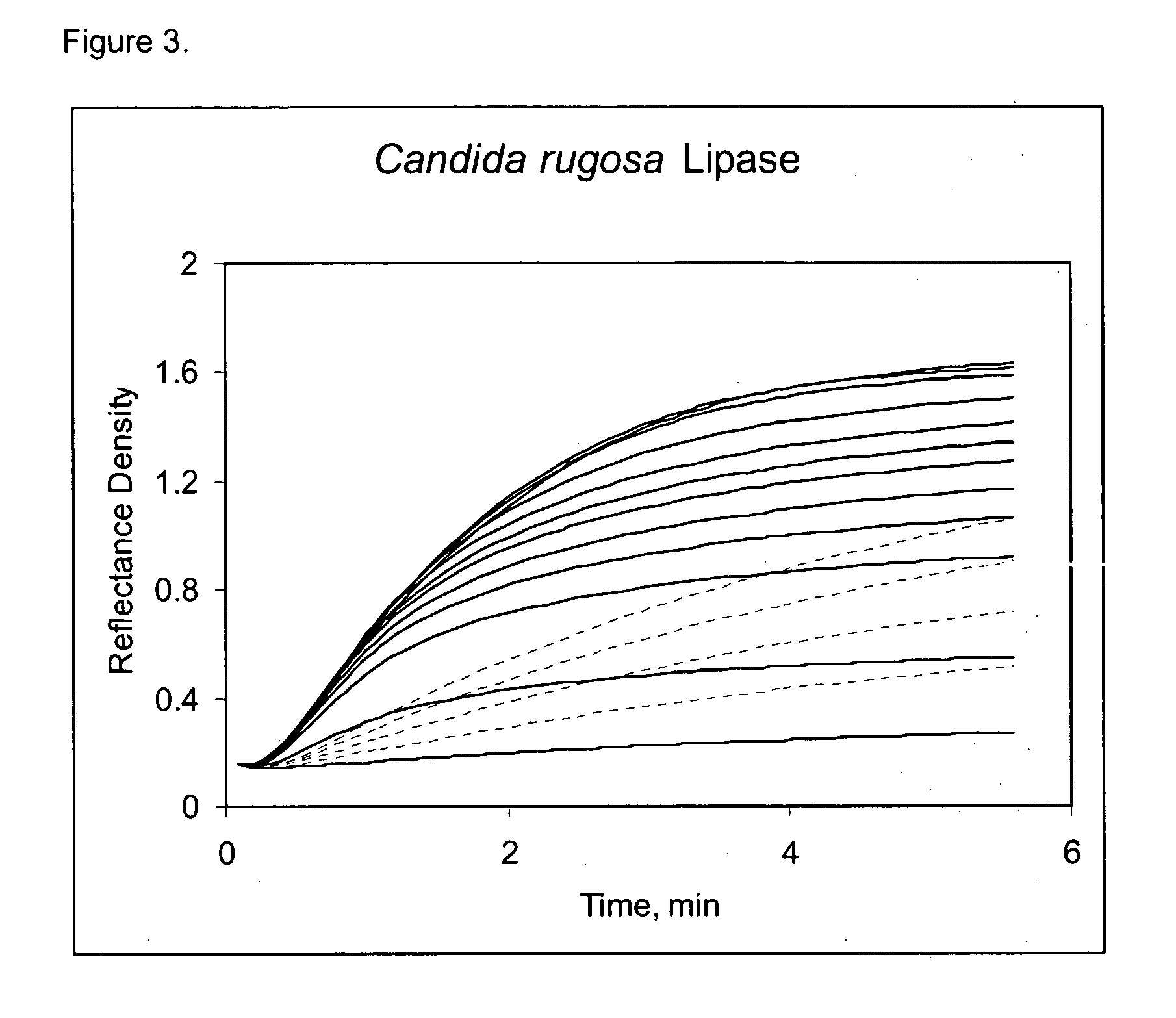Dry analytical element for high-density lipoprotein cholesterol quantification
- Summary
- Abstract
- Description
- Claims
- Application Information
AI Technical Summary
Benefits of technology
Problems solved by technology
Method used
Image
Examples
example 1
Example Formats of the Thin Film Element
Three example formats of the thin film element used in this evaluation are shown in Tables 1, 2 and 3. The locations of the enzymes and other reactive ingredients may be placed in a variety of other positions within the layers of the thin film element. However, a preferred embodiment of the present invention includes a non-HDL precipitant (PTA), an HDL selective surfactant, and an HDL selective CEH. Each format of the thin film element contains individual layers, which are represented by the various schematic arrangements. In referring to the arrangements, each layer is numerically designated with ‘-01’ representing the bottom gel layer. Successive numbers represent each additional layer with the washcoat (top layer) designated as ‘-06’ (in a six layer arrangement).
TABLE 1Example (1) of a Multilayer Thin Film Elementfor Quantification of HDLC.PTA / MgCl2 / SurfactantBaSO4 Spreadlayer / SurfactantI-100 AdhesionGel / COD / CEHGel / Dye / POD
TABLE 2Example...
example 2
It has been known for many decades (17, 18, 19) that precipitating agents can be used to selectively eliminate non-HDL to enable the development of an HDLC assay that does not require ultra-centrifugation. These precipitating reagents were developed for liquid assays. Their use in dry slide elements was also investigated. The three most common non-HDL precipitating reagents, dextran sulfate (DS), phosphotungstic acid (PTA), and polyethylene glycol (PEG) were evaluated in the thin-film slide. The precipitating reagents were added in the final pass washcoat (‘-05’ or ‘-06’ depending on format) layer so that they would be on the surface of the slide and interact with the non-HDL lipoproteins spotted on the slide in the initial time frame to enable the largest possible interaction time for precipitation in the thin-film element. Early attempts with DS up to concentrations of 4 g / m2 and with PEG up to 10 g / m2 proved unsuccessful in the thin-film element. PTA, howeve...
example 3
Effect of a Selective CEH on HDLC Specificity
Early development testing showed that various cholesterol esterase (CEH) enzyme sources impacted the overall HDLC selectivity of the assay. Available unique CEH and lipase enzyme sources from current enzyme vendors were acquired for screening purposes and coated in the direct HDL thin-film element. LDL Cross-Reactivity for the best and worst CEH sources shows a substantial HDLC selectivity difference in both the raw kineticsm (see FIGS. 1,2,3,4) and the calculated cross-reactivity (Table 6). From this data, the overall contribution to the HDLC selectivity from the selective CEH alone is approximately 35% (50.7% (Bovine Pancreas)-15.7% (Candida rugosa Lipase)), representing a substantial contribution to HDLC selectivity. Furthermore, this data also shows that the Candida rugosa lipase enzyme is more selective than the Denka CEH, and considerably better than either pancreas CEH sources. Other screened microorganism CEH sources showed HDLC...
PUM
 Login to View More
Login to View More Abstract
Description
Claims
Application Information
 Login to View More
Login to View More - R&D
- Intellectual Property
- Life Sciences
- Materials
- Tech Scout
- Unparalleled Data Quality
- Higher Quality Content
- 60% Fewer Hallucinations
Browse by: Latest US Patents, China's latest patents, Technical Efficacy Thesaurus, Application Domain, Technology Topic, Popular Technical Reports.
© 2025 PatSnap. All rights reserved.Legal|Privacy policy|Modern Slavery Act Transparency Statement|Sitemap|About US| Contact US: help@patsnap.com



